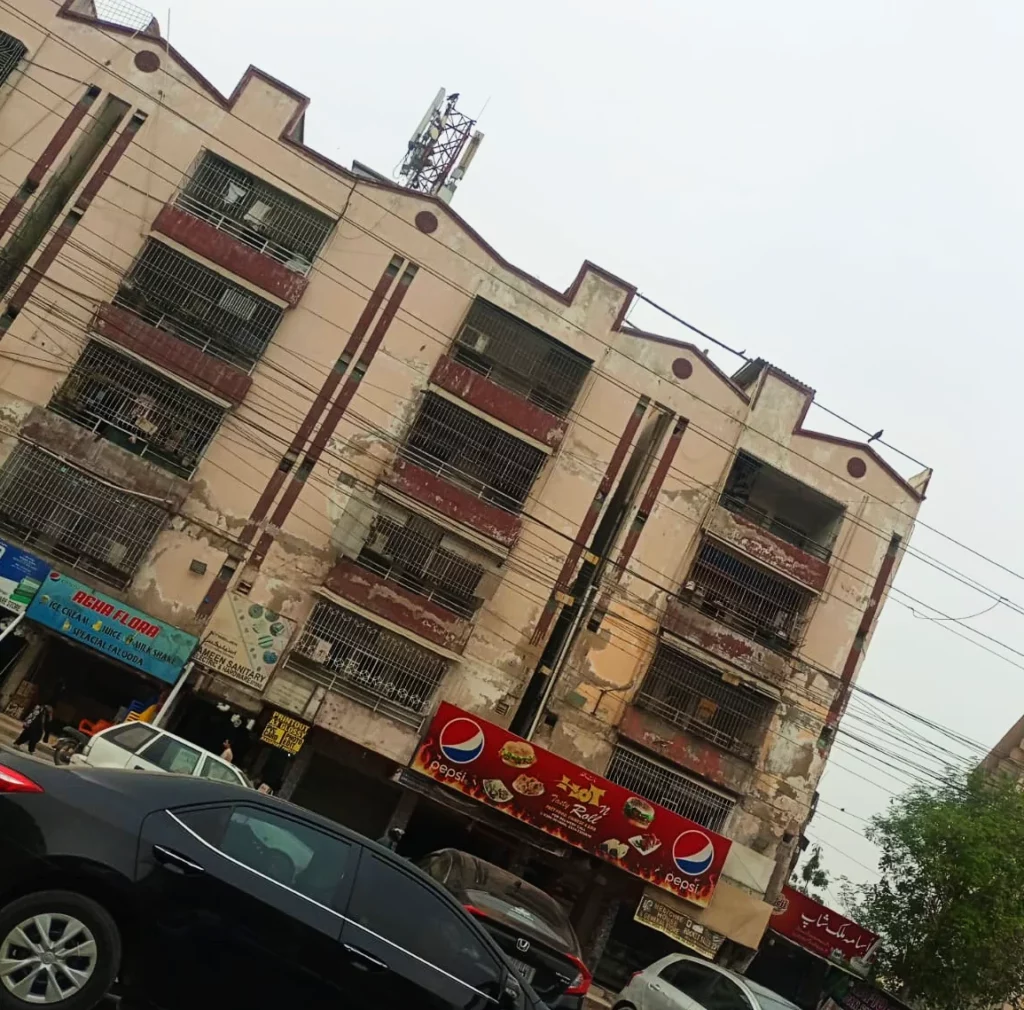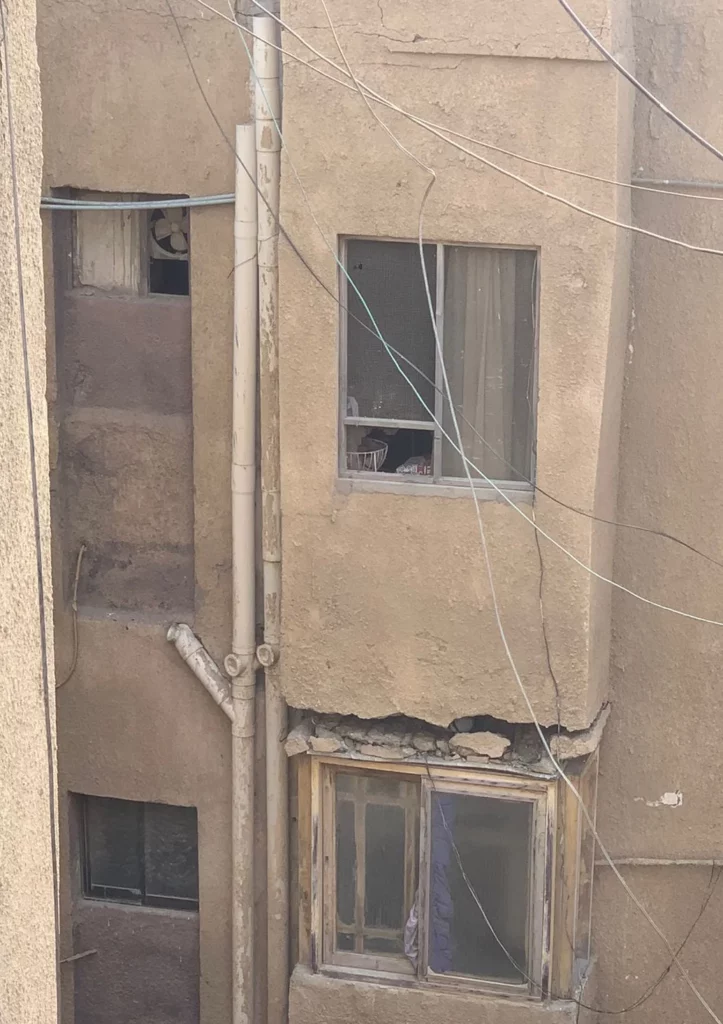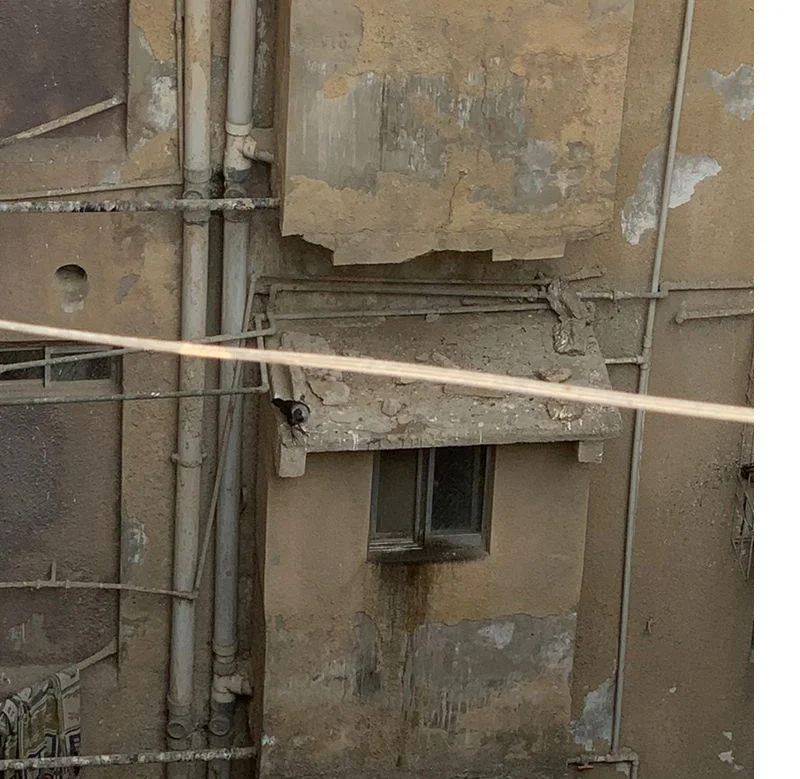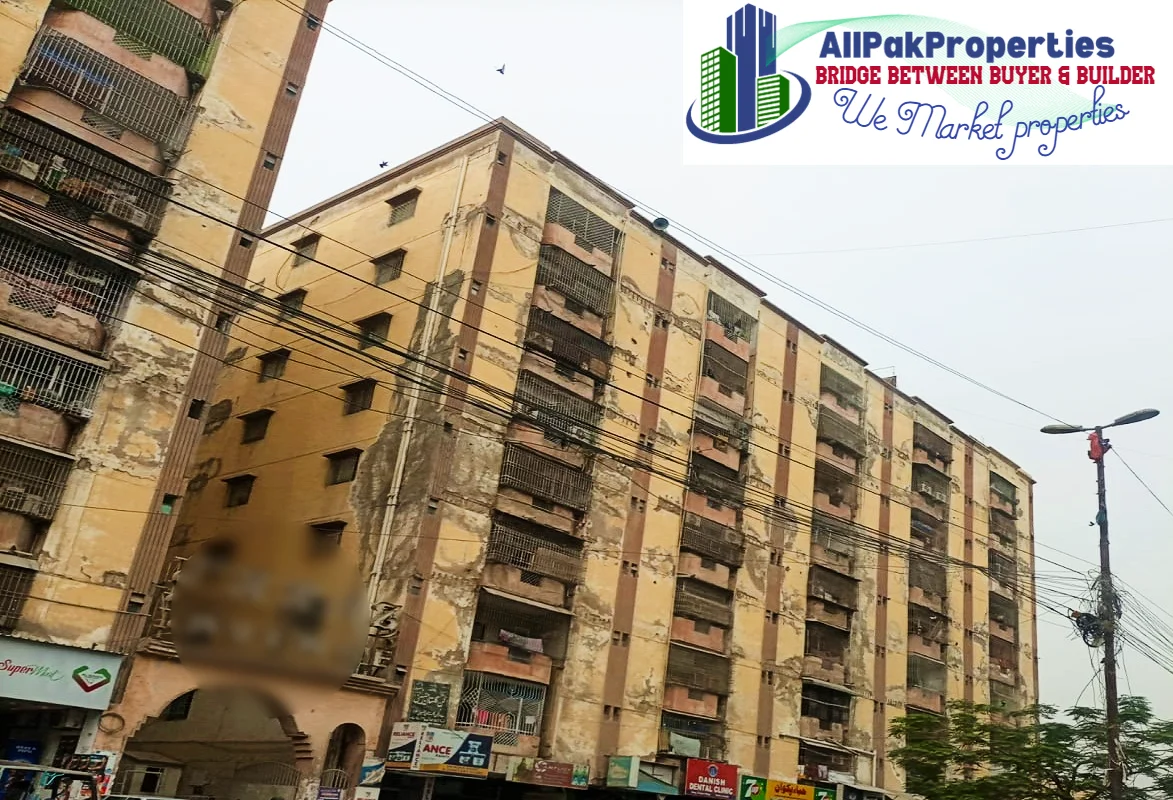Table of Contents
Current Situation of Building Maintenance In Karachi
Building maintenance is not only a critical issue but needs to be addressed on an emergency basis in Pakistan, especially in Karachi, where many people live in residential buildings (which are typically Ground +6 or Ground + 10th floors) that require emergency building maintenance.
In Karachi, a bustling metropolitan center in Pakistan, there are around 35,000 residential and commercial buildings. Shockingly, 70 percent of these structures, totaling roughly 26,000 buildings, are currently in poor condition, demanding immediate attention for building maintenance. This situation underscores a critical need for prompt and effective maintenance efforts to ensure the safety and longevity of these structures.
Approximately, over half a million reside in those 26,000 buildings. The harsh truth is that those over half a million residents face the burning risk of immediate health issues and a smoldering threat to life over the next 15 to 20 years. Building maintenance isn’t just crucial; it’s a must for survival.
By following best practices for building maintenance and implementing programs to address these issues, we can help ensure that buildings remain safe, and functional and provide a healthy environment for occupants.

Common Problems Faced by Buildings in Karachi
Building Leakage and Its Impact on Structural Integrity
Building leakage, particularly arising from plumbing issues, poses a significant threat to the structural integrity of a property. The consequences of such leakage extend beyond building appearance and explore potential long-term damages that can compromise the safety and longevity of the building.
Understanding the Causes
Leakage often arises due to a variety of plumbing issues, ranging from deteriorating pipes to faulty fittings. The constant exposure to water, especially in high-moisture environments, can exacerbate the degradation of plumbing components. Corrosion, wear and tear, and poor-quality materials contribute to the vulnerability of the plumbing system.
Structural Damages
The impact of building leakage on the structure is multi-faceted. Firstly, it can lead to the deterioration of building materials, such as concrete, wood, and drywall. Continuous exposure to moisture weakens these materials over time, potentially compromising their load-bearing capacity.
Mold and Mildew (Fungus) Growth
The perpetual dampness resulting from leakage creates an ideal environment for the growth of mold and mildew. These microbial infestations not only contribute to an unhealthy living environment but also accelerate the decay of building materials. Mold spores can spread quickly, affecting indoor air quality and posing health risks to occupants.
Foundation Instability
In severe cases, prolonged leakage can impact the building’s foundation. Moisture infiltration into the soil surrounding the foundation can lead to soil expansion and contraction, causing shifts in the foundation. This instability can result in structural misalignments, wall cracks, and uneven floors.
Financial Implications
Dealing with the consequences of building leakage necessitates considerable financial investment. From repairing structural damages to eradicating mold infestations, the costs can escalate rapidly. Additionally, neglecting timely repairs may lead to more extensive damages, exacerbating the financial burden on property owners.
Preventive Measures
Implementing proactive measures is crucial to prevent and mitigate building leakage. Regular plumbing inspections, prompt repairs of leaks, and the use of high-quality, durable materials during construction contribute to the longevity of the building.
Building leakage arising from plumbing issues is not just an apparent concern; it poses a tangible threat to the structural stability and overall well-being of a property. Proactive maintenance, prompt repairs, and the adoption of preventive measures are vital in safeguarding buildings from the dangerous impacts of leakage.

Seawater Seepage: A Silent Threat to Karachi’s Buildings
The coastal city of Karachi, with its vibrant energy and bustling population, faces a hidden threat that silently undermines the structural integrity of its buildings—seawater seepage. This tricky problem, often ignored, poses a significant challenge to the maintenance and longevity of structures in the metropolis.
The Culprit: Seawater Seepage
Seawater, with its corrosive nature, has a detrimental impact on the concrete and steel components of buildings. The exposure to salty air, driven by the city’s proximity to the Arabian Sea, initiates a process that, over time, weakens the building’s foundation and structure.

Structural Damage Unveiled
Seepage, a consequence of the relentless assault by seawater, infiltrates the building’s walls and foundations. The damage is from many directions, affecting both the exterior and interior components. The continuous exposure to salt worsens the corrosive process, resulting in:
- Concrete Erosion: The salt content in seawater accelerates the erosion of concrete, leading to cracks and compromised structural stability.
- Steel Reinforcement Bar Corrosion: The steel reinforcement bars within the building’s structure corrode due to the corrosive impact of salt, diminishing their load-bearing capacity.
- Moisture and Fungus Growth: Seepage creates a conducive environment for moisture, fostering fungus growth. This poses health risks and weakens the building’s overall resilience.
- Interior Damage: Beyond the visible exterior effects, seepage enters into living spaces, damaging walls, ceilings, and flooring. This compromises the appearance and habitability of the building.
Reducing the Impact: Effective Building Maintenance Measures
Addressing seawater seepage necessitates proactive building maintenance strategies. Here are essential measures to counteract the detrimental effects:
- Waterproofing Solutions: Applying effective waterproofing solutions to building exteriors can create a protective barrier, preventing seawater from infiltrating the structure.
- Regular Inspections: Conducting routine inspections allows for the early detection of seepage issues. Timely identification enables swift intervention before the damage becomes extensive.
- Concrete Repairs: Implementing specialized concrete repair techniques helps in restoring damaged surfaces and preventing further erosion.
- Ventilation and Dehumidification: Improving ventilation and employing dehumidification systems can reduce the moisture caused by seepage, limiting fungus growth and interior damage.
In the battle against seawater seepage, following the delicate ways it damages buildings is vital. Proactive and regular building maintenance, coupled with strategic interventions, can safeguard Karachi’s structures from the corrosive influence of seawater, ensuring their longevity and resilience in the face of this silent menace.
Number of Cracks in Old Buildings
Addressing Karachi’s Old Building Crises
In the bustling city of Karachi, the presence of cracks in old buildings is a persistent challenge that poses a serious threat to both residents and the structural integrity of these structures. This article explores the alarming number of cracks in old buildings in Karachi, shedding light on the inherent dangers they bring and emphasizing the critical role of building maintenance in averting potential disasters.

The Widespread Issue of Cracks
Old buildings in Karachi, standing as a testament to the city’s rich history, often exhibit visible cracks due to a variety of factors including:
- Foundation Issues: Uneven foundation settling can lead to structural stress and cracks.
- Earthquakes: Seismic activity can cause significant structural damage, leading to cracks in buildings.
- Poor Construction: Inadequate construction practices or substandard materials can contribute to cracks.
- Water Damage: Water infiltration, especially in regions with heavy rainfall, can weaken the structure and cause cracks.
- Temperature Fluctuations: Extreme temperature variations can result in the expansion and contraction of building materials, leading to cracks.
- Structural Overload: Excessive weight or load on a building beyond its capacity can cause structural damage and cracks.
- Settlement: Natural settlement over time, especially in newly constructed buildings, may lead to cracks.
- Chemical Reactions: Exposure to certain chemicals or corrosive substances can deteriorate building materials, causing cracks.
- Poor Soil Conditions: Buildings on unstable or expansive soils may experience movement and cracking.
- Vibration: Proximity to sources of constant vibration, such as heavy traffic or industrial machinery, can contribute to cracks.

The most interesting part is sometimes these cracks also initially ignored as just apparent concerns, can evolve into significant structural issues that compromise the safety and habitability of these structures.
Cracks are indicative of underlying structural problems within the building. Over time, these seemingly innocuous fractures can widen, weakening the building’s foundation and load-bearing elements. The structural implications of these cracks are profound, making it imperative to address them through effective building maintenance measures.
Existing Regulations and Guidelines for Building Maintenance in Karachi
Regulations are not being strictly enforced
In the context of building maintenance regulations in Pakistan, a significant challenge arises from the lack of strict enforcement, primarily fueled by corruption within the system. While regulations and guidelines exist, their implementation is hindered by corrupt practices, creating a loophole for non-compliance. This lax enforcement has detrimental consequences, especially concerning leakages, as builders may cut corners without facing the necessary repercussions.
Corruption often leads to compromised building standards, allowing subpar construction practices to go unchecked. Consequently, this contributes to a higher likelihood of structural issues, including leakages, which, when unaddressed, escalate into severe problems jeopardizing the safety and habitability of buildings. Addressing corruption within the regulatory framework is imperative to ensure the effective enforcement of building maintenance standards and mitigate potential risks associated with structural damages.

Regulations and Guidelines for Building Maintenance in Karachi
Comprehensive building maintenance regulations in Karachi, click below to see the Sindh Building Control Authority (SBCA)
Challenges in Implementing Building Maintenance Programs
- Lack of Funding: Adequate financial resources are often a significant hurdle in executing building maintenance programs. Many projects face budget constraints, hindering the implementation of necessary repairs and renovations.
- Lack of Awareness: Insufficient awareness among building owners and residents about the importance of regular maintenance can impede program initiation. Educating stakeholders about the long-term benefits is crucial to garner support.
- Lack of Skilled Labor: While Pakistan boasts a skilled labor force for initial construction, there is a noticeable gap in building maintenance expertise. The shortage of skilled labor poses a practical challenge. Finding qualified professionals for specialized maintenance tasks can be difficult.
- Lack of Regulations: Despite existing regulations, their ineffective enforcement contributes to the challenge of ensuring compliance. Strengthening regulatory mechanisms is essential to introduce a sense of responsibility among building owners and occupants.
Solutions for Building Maintenance in Karachi
- Proper renovation of the building
- Filling the crack by the standard of civil work
- Rescheduling all the plumbing works wherever the leakage is
- Government programs for building maintenance through the allocation of funds and loan programs
- Private sector firms have the opportunity to engage in this initiative and generate profits by undertaking maintenance tasks for the affected buildings.

Government and Private Sector participate in Building Maintenance
Both the government and private sectors should understand that patience is required for substantial returns. A foolproof plan is in place.
Government Sector Participation
- Government Funding Initiatives:
- Allocation of funds for building maintenance projects in Karachi to ensure structural integrity and safety.
- Loan Programs for Building Owners:
- Offer financial assistance through loan programs for building owners to facilitate necessary building maintenance work.
- Regulatory Oversight and Compliance:
- Strengthening and enforcing regulations to ensure that owners comply with building maintenance standards.
- Skill Development Programs:
- Implementation of skill development programs to enhance the capabilities of maintenance workers in the construction sector.
- Collaboration with Private Sector:
- Encouraging partnerships with private sector companies to jointly address building maintenance challenges in Karachi.
- Public Awareness Campaigns:
- Conducting awareness campaigns to educate the public and building owners about the importance of regular maintenance for a safer urban environment.
Private Sector Participation – Business opportunities
- Maintenance Contracts and Service Agreements:
- Private sector firms secure maintenance contracts with building owners, earning revenue through ongoing service agreements for inspections and repairs.
- Renovation and Rehabilitation Projects:
- Investment in building renovation projects allows private entities to earn returns by enhancing property values and attracting tenants.
- Consultancy Services for Building Upkeep:
- Offering consultancy services to building owners on effective maintenance strategies, providing expertise for a fee.
- Technology Solutions for Building Efficiency:
- Providing technological solutions, such as smart building systems, for improved efficiency, with revenue generated through technology deployment.
- Public-Private Initiatives and Funding:
- Participating in public-private initiatives, private firms can secure funding from government partnerships, creating a mutually beneficial relationship.
- Community Development Projects:
- Investing in community development projects, private sector entities contribute to the improvement of neighborhoods, fostering a positive public image and potential future opportunities.
Conclusion
Forecasting the storm to hit Karachi, could be capable of causing widespread damage and chaos. In short, Karachi is on the edge of a potential disaster. People with foresight recognize the approaching danger and understand the critical need for urgent building maintenance. This potential crisis, at its worst, won’t spare even half a million vulnerable residents, including children, women, and the elderly. It’s a serious issue that demands immediate attention.
I believe that as Pakistan, we can take a leading role in proactively addressing this issue by implementing practical measures and constructing the barrier before the first hit of the storm. Now or Never!
PS: This article serves as a call to authorities to address a crucial but overlooked issue. We hope it gathers attention and prompts the necessary action.
Email to the author of the above article: admin@allpakproperties.com
Read Related: How the private sector can kickstart building maintenance as a business.
Contact for your building/House Maintenance 03340304003 for overseas Clients +923340304003



